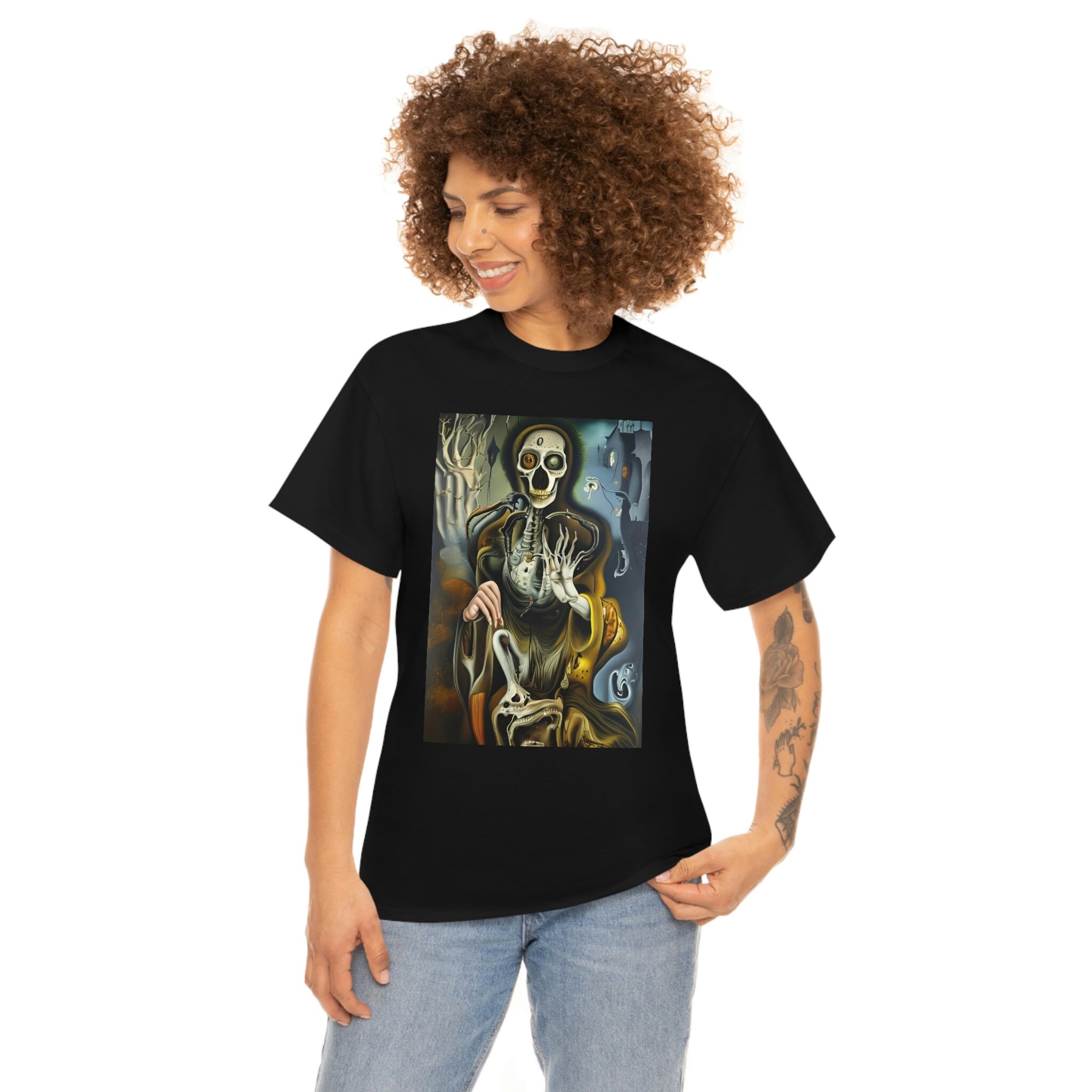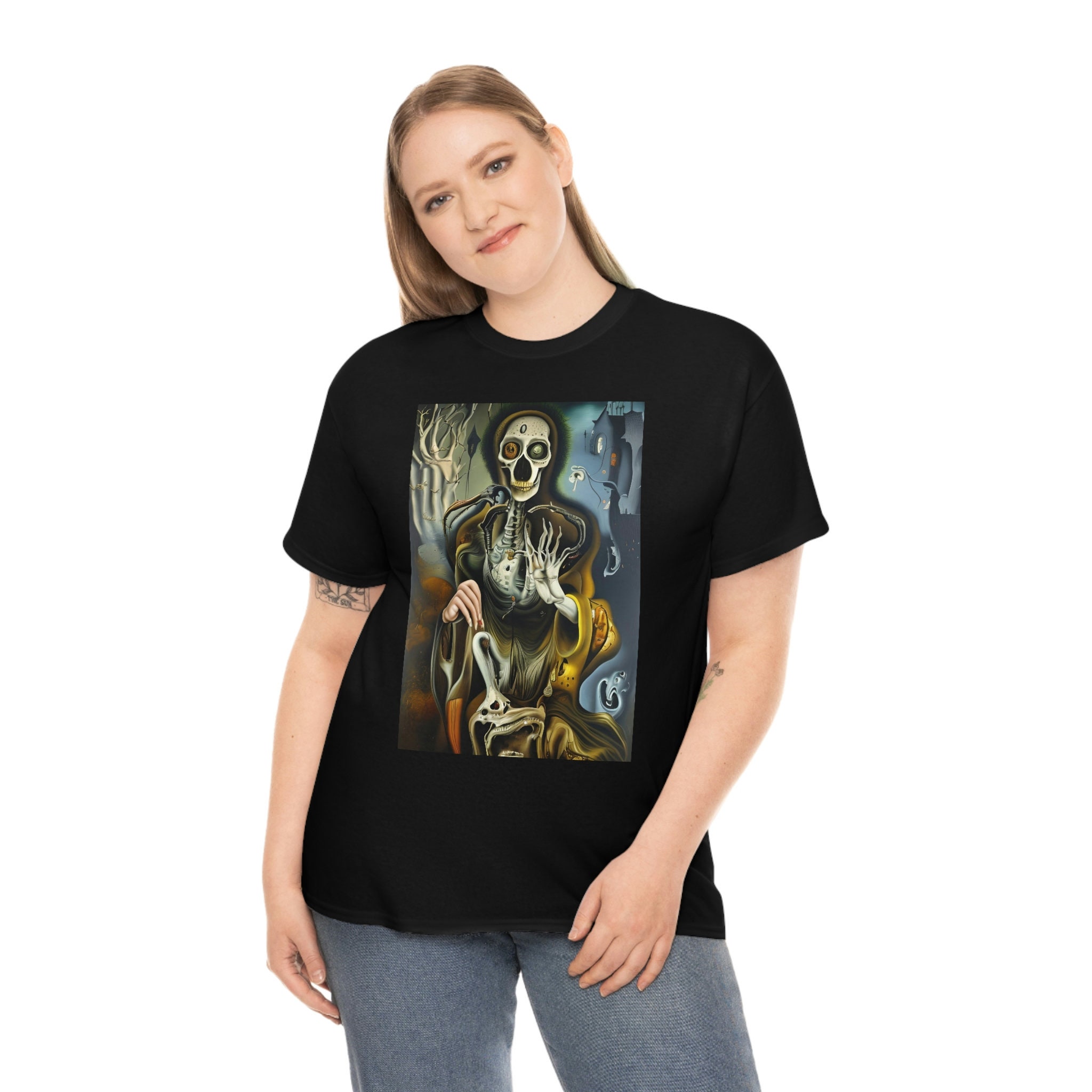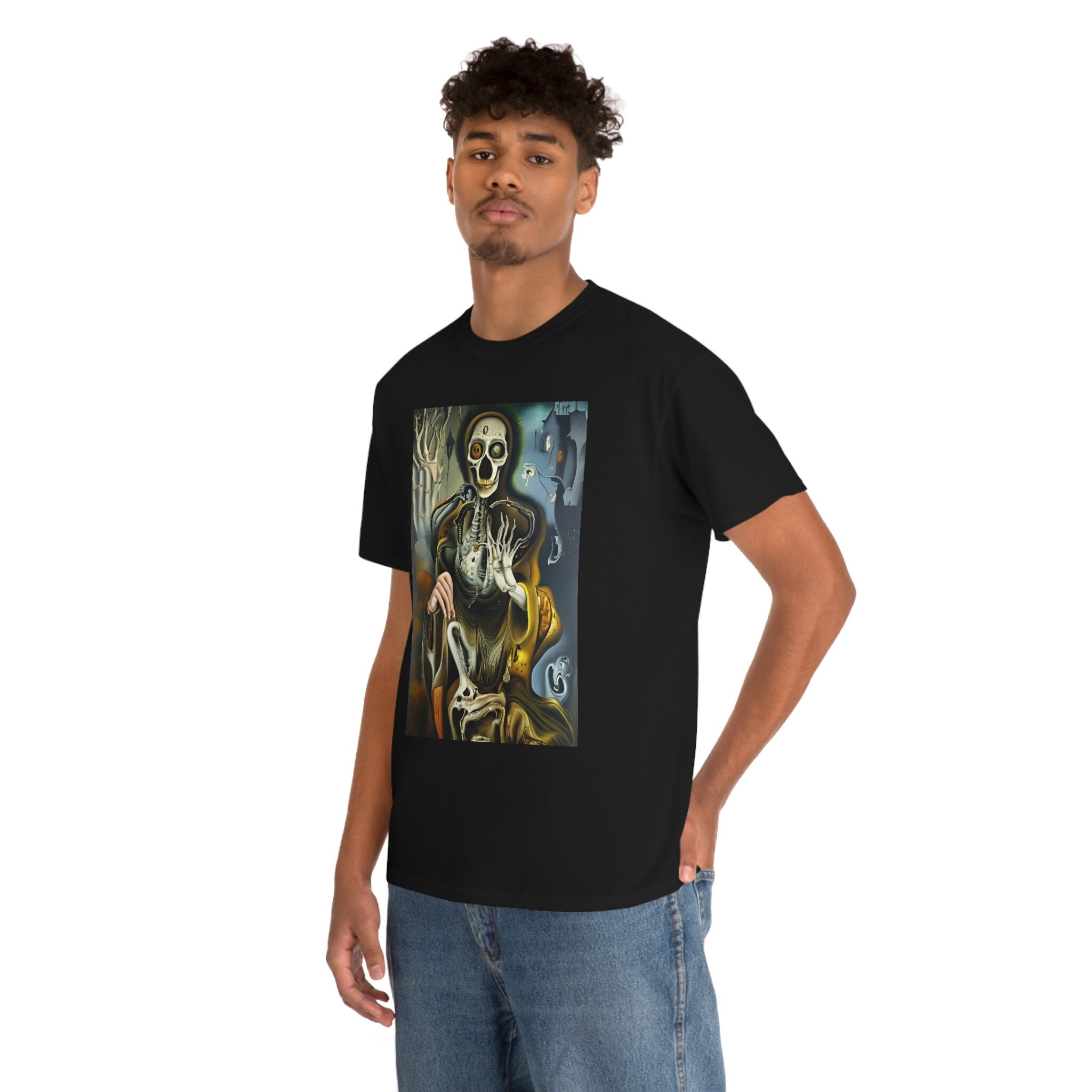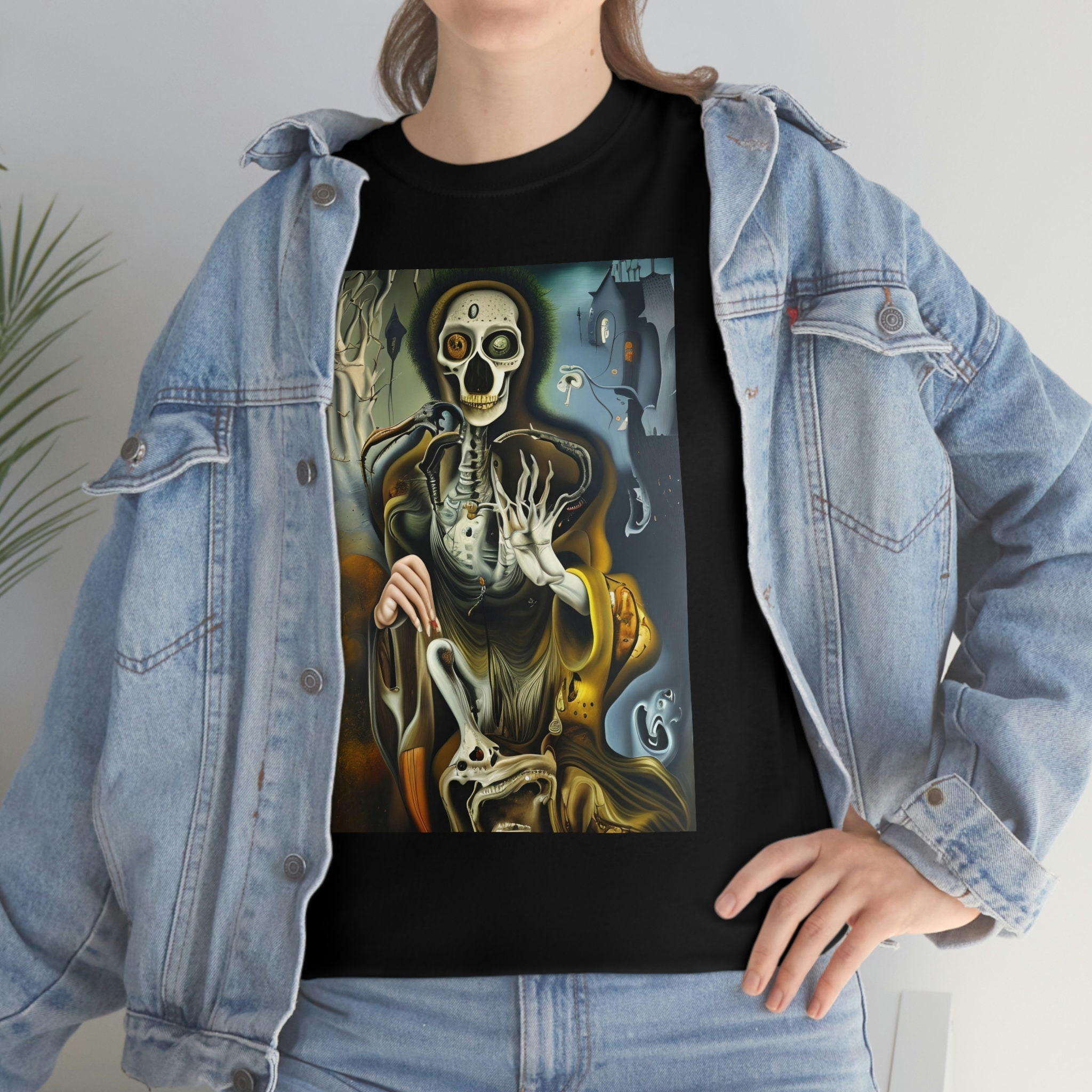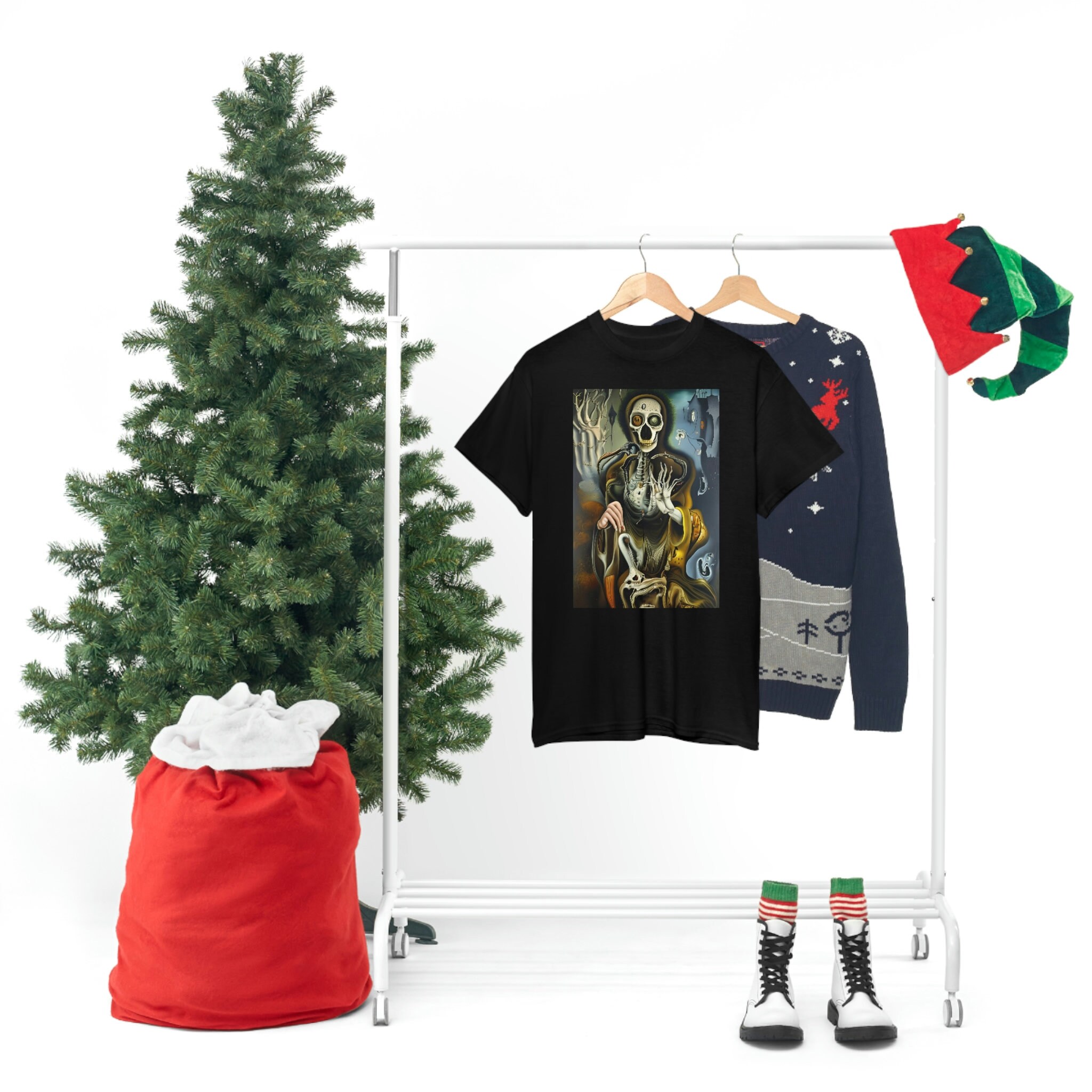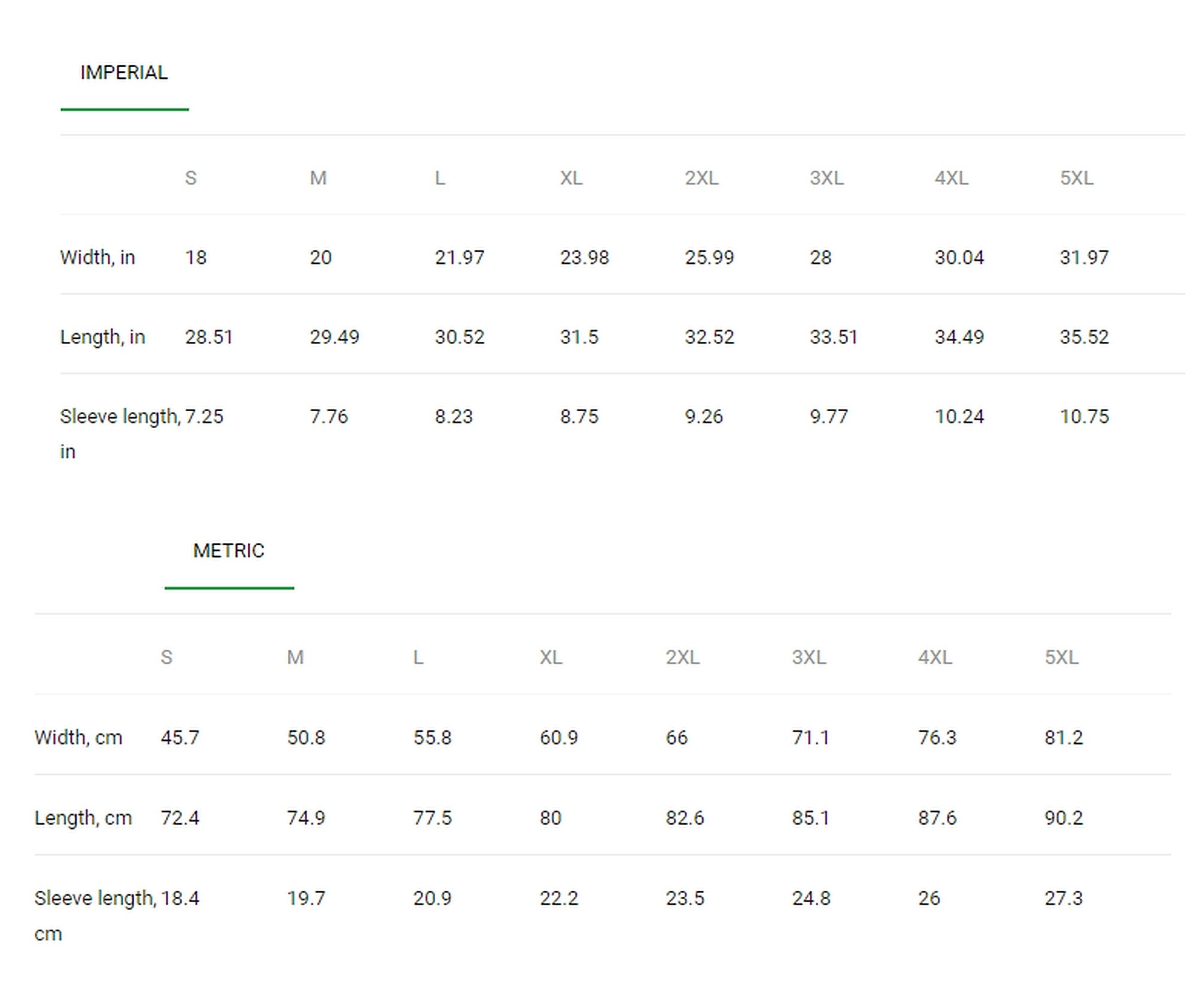"Necromancer" is a gripping painting that commands immediate attention. The canvas is mostly dominated by the central figure, a necromancer, who appears to be decomposing, or perhaps, transitioning into an otherworldly entity.
The necromancer's face is haunting, etched with a gruesome reality of death and transformation. His flesh has given way to time and mystical forces, leaving a skull-like visage. A macabre hole exists in his forehead, surrounded by numerous pit marks, reminiscent of age or perhaps damage from his arcane practices. Instead of eyes, he possesses metallic orbs, one silver and the other copper, lending him an unnerving, inhuman gaze. The way they reflect light gives an illusion of a soul trapped within, yearning for release.
His attire is a once resplendent golden robe, now aged and tattered, its glamour faded but not entirely lost, hinting at his past grandeur. The robe is ragged enough to reveal a skeletal frame beneath, a chilling image of death and decay. One of his shoulder blades has twisted bizarrely, appearing more like an abstract sculpture than a part of human anatomy.
On one side, his hand is a normal, flesh-toned appendage, a stark contrast to his otherwise decaying form. The other hand is grotesquely deformed, rendered a ghastly white, a chilling testimony to the necromancer's ongoing transformation.
Above his right shoulder, a stylized tree stretches up, its branches twisting and turning. Its leaves are nowhere to be seen, echoing the desolate, haunting theme of the painting. The ground beneath is rendered in gold and black hues, suggesting a land scorched by arcane powers or perhaps the necromancer's own doing.
On his left, a stylized wizard's tower looms. Despite its distance, it gives a sense of foreboding, a silent witness to the necromancer's journey and the power he wields.
"Necromancer" is a painting that's not for the faint-hearted. It delves into the darker, unknown aspects of magic and transformation, and through its profound symbolism, it invites viewers to contemplate the mysteries of life, death, and the spaces in-between.
This heavy cotton tee has the classic cotton look and feel. Casual elegance will make it an instant favorite in everyone's wardrobe.
.: Classic fit
.: 100% Cotton
.: Light fabric (5.3 oz/yd² (180 g/m²))
.: Tear away label
.: Runs true to size
To find your size. lay out a t-shirt, that you know fits, flat onto a table top to measure.
Small
Width=18.00"
Length=28.51"
Sleeve Length=7.25"
Medium
Width=20.00"
Length=29.49"
Sleeve Length=7.76"
Large
Width=21.97"
Length=30.52"
Sleeve Length=8.23"
X-Large
Width=23.98"
Length=31.50"
Sleeve Length=8.75"
2X-Large
Width=25.99"
Length=32.52"
Sleeve Length=9.26"
3X-Large
Width=28.00"
Length=33.51"
Sleeve Length=9.77"
4X-Large
Width=30.04"
Length=34.49"
Sleeve Length=10.24"
5X-Large
Width=31.97"
Length=35.52"
Sleeve Length=10.75"
Shipping from United States
Processing time
1-7 business days
Customs and import taxes
Buyers are responsible for any customs and import taxes that may apply. I'm not responsible for delays due to customs.
Payment Options
Returns & Exchanges
I gladly accept returns and exchanges
Just contact me within: 14 days of delivery
Ship items back to me within: 30 days of delivery
I don't accept cancellations
But please contact me if you have any problems with your order.
The following items can't be returned or exchanged
Because of the nature of these items, unless they arrive damaged or defective, I can't accept returns for:
- Custom or personalized orders
- Perishable products (like food or flowers)
- Digital downloads
- Intimate items (for health/hygiene reasons)
Conditions of return
Buyers are responsible for return shipping costs. If the item is not returned in its original condition, the buyer is responsible for any loss in value.
Frequently Asked Questions
What is All-Over-Print (AOP)?
All-Over Print (AOP) is a printing method that uses dye-sublimation to print a design onto polyester. During the dye sublimation process the dye is absorbed into the fabric. Since, it is not printed on the surface, like most t-shirts, it provides for a fantastic soft-to-the-touch feel and superior breathability.
AOP is a more time consuming method than screen printing or direct-to-garment (DTG) printing, so the prices are higher and the production times are longer, but the results are most definitely worth it.
Advantages of AOP:
The design won't peel off, unlike typical screen printing.
The design is part of the fabric of the item, so it will last as long as the item does.
The intensity of color is often unmatched.
What is Giclée?
Giclée (pronounced zhee-CLAY or often gee-CLAY) is a printing process that creates a museum quality, archival print. Special acid-free, paper is printed with fade resistant ink using a state-of-the-art, large format inkjet printer.
What is a gallery wrap canvas?
Gallery wrap is a style of displaying a canvas that doesn't show any visible staples or nails holding the fabric to the wooden stretcher bars. This style of canvas is intended to be hung unframed.
What is a gallery mirror wrap canvas?
Mirrored edges (mirror wrap) is used to show the whole image on the main surface, rather than printing the edges of the image on the sides (image wrap) of the canvas frame. It is usually used when there is necessary detail on the edges of the image. Image wrap is used when the focal point of the image is in the center.

